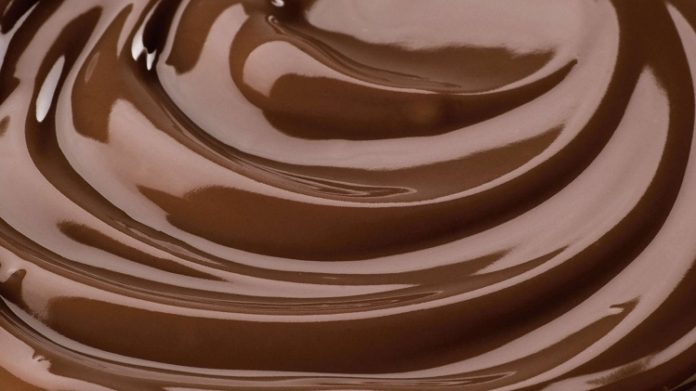
Lecithin is a generic word for an amphiphilic substance that attracts water and fatty molecules, such as those found in animal and plant tissues. Plant lecithin is prescribed to lower cholesterol in medicine naturally and is used to emulsify, smooth texture, and repel adhering ingredients in food. Lecithin is most usually a by-product of soy or sunflower plants for commercial use. Soy lecithin is a lipid by-product derived from soybeans that chocolatiers frequently use as an emulsifier to create ganache. Lecithin can be acquired commercially at a low price.
History of Lecithin in the Food Industry
Lecithin (from the Greek lekythos, “yolk”) was initially extracted from egg yolk in 1845 by Théodore-Nicolas Gobley, a French chemist and pharmacist who, a decade later, discovered vanillin as the distinct taste ingredient of natural vanilla.
Gobley established the occurrence of Lecithin in a wide range of biological materials, with an emphasis on tissues of animal origin. He discovered that biological Lecithin was a mixture of bipolar phospholipids that performed vital physiological tasks such as cell membrane stabilization and metabolic activity facilitation in human organs (brain, blood, liver, etc.).
The first recorded mention of Lecithin in plants such as soybeans is from 1889 in Switzerland. A German chemist named Ernst Schulze’s legacy would later establish Germany as the dominant European hub for industrial production of food-purpose Lecithin.
Hansa-Mühle submitted the first patent for soy lecithin in chocolate in 1930 and would subsequently start importing soybean as a product from the abundant United States and selling the finished ingredient back to American chocolate makers.
Plant-based Lecithin is a derivative of various raw materials, including soybeans and rapeseeds, and sunflower seeds. Despite this diversification, soybeans remain the highest-yielding source of lecithin production.
Why is Lecithin Added to Chocolate?
Lecithin is added to chocolate for the following reasons:
As an Emulsifier
Because Lecithin is a lipid, it can form a strong bond with the fat in chocolate. When chocolatiers make ganache, this connection helps to create an emulsion between the chocolate and the liquid. Because of the soy lecithin, moisture or water particles from the cream or fruit puree can quickly emulsify with the chocolate, resulting in a nicely smooth ganache. This procedure produces a gleaming, homogenous ganache that will melt in your tongue.
To lower viscosity
Even when melted, chocolate is a dense substance by nature. Lecithin is used to decrease the viscosity of chocolate by binding the cocoa butter, cocoa solids, sugar, and milk powder together. This process may be a requirement if the fat-to-solids ratio is off, such as when the amount of cocoa butter naturally present in the cacao is smaller; this can occur when cacao farmed is closer to the equator. Because some chocolatiers prefer to solve this problem by adding additional cocoa butter, Lecithin in chocolate is frequently known as a negative. Many individuals even consider it “cheating.”
To Improve Crystallization
During the tabletop tempering process, a thinner chocolate (one with low viscosity) will be simpler to handle across a slab of marble. As a result, many chocolatiers prefer to utilize Lecithin. It makes the chocolate more fluid and easier to transfer around the cool marble, allowing Beta 5 crystals to form. The most stable form of cocoa butter is beta five crystals, with which tampering would be the only method to obtain it. Chocolate can have a gorgeous gloss, snap, and melt at body temperature thanks to these stable crystals.
What do Emulsifiers do in Chocolate?
An emulsifier is a substance that aids in preventing fat and water from separating in a product. An emulsifier combines the qualities of water and fats to act as a “glue” that binds water and oil (fat). An emulsifier can keep a small amount of water from causing the chocolate to seize (due to condensation). Emulsifiers also make it easier to form chocolates into different shapes. Chocolate held would be awful for a chocolate manufacturer and disastrous for a significant chocolate production facility.
Emulsifiers are used in chocolate to thin out the liquid making it easier to work with the chocolate while preparing bars and confectionery. Emulsifiers also help to keep the ingredients in chocolate together, eliminating the need for pricey cocoa butter.
Emulsifiers also aid in the binding of chocolate components. For example, reducing friction between cocoa butter and other chocolate ingredients like sugar, cocoa solids, or powdered milk is with an emulsifier.
Adding more cocoa butter to chocolate would accomplish the same goal of keeping the ingredients together. However, because cocoa butter is more expensive than emulsifiers, they are utilized as a cost-cutting measure.
Advantages of Using Soy Lecithin
- Reduction in the viscosity of the chocolate. What does this imply? It means the chocolate gets “thinner” and has better flow qualities. Soy lecithin gives the chocolate a more workable consistency, making it easier to temper and mold and thus makes the chocolate maker’s job easier.
- Soy lecithin and cocoa butter are both added to chocolate for the same reason, which is to improve the flow of the chocolate during the bean-to-bar process once more. Cocoa butter is far more expensive, and you’ll need a lot more of it to get the same outcome. Soy lecithin, on the other hand, outperforms cocoa butter in terms of price and quantity. By using soy lecithin for cocoa butter, the entire process becomes less expensive.
- Chocolate businesses that use larger machine configurations will benefit from soy lecithin. Chocolate with soy lecithin works better through huge pipes and machinery because it reduces viscosity. This addition keeps the chocolate from becoming stuck in the middle of the process (mainly if it contains a high percentage of cacao).
- At times, either due to a lighter roast, humidity, or certain ingredients (some sugars and milk powder) that quickly absorb water, water does make it into the chocolate. The inclusion of a small amount of Lecithin keeps the water from causing problems such as seizing or thickening the chocolate.
- Soy lecithin also extends a chocolate product’s shelf life, improving profitability, and enhances sugar crystallization, preventing the chocolate from blooming.
Disadvantages Of Using Soy Lecithin
- Soy lecithin makes the bean-to-bar process easier on the one hand, but it also changes the texture and flavor of the chocolate on the other. Many customers comment that the chocolate has a “waxy” quality because of the soy lecithin. This waxy texture is nothing like the smoothness and roundness of adding cocoa butter to the chocolate. It has a waxy, plastic quality that isn’t always agreeable to the taste buds.
- Soy lecithin is found naturally in soybeans. However, its synthesis is unnatural. It must be extracted from soybeans using strong chemical solvents such as hexane and acetone. Furthermore, you can bleach the color of soy lecithin to change it from a filthy brownish hue to a pale yellow.
- Nowadays, practically all commercial soy is genetically engineered. Unless the label states explicitly “organic soy lecithin,” it was most likely derived from a genetically modified soybean. Making Organic Lecithin is without the need for chemical solvents through a mechanical method. However, it is far more expensive than commercial soy lecithin, undermining the purpose of using it instead of cocoa butter in the first place.
How Much Lecithin Should You Add To Chocolate?
The ideal amount of Lecithin you use depends on the technique you are using it.
- Amount of Soy Lecithin for Foams- Typically, a 0.25% to 1.0% ratio of soy lecithin makes do. A gram of soy lecithin is sufficient for every 100 grams of liquid.
- Amount of Lecithin in Emulsions- For stability of emulsions, the addition of Lecithin is at a weight ratio of 0.3% to 1.0%, depending on the stabilization amount needed. The addition of Xanthan gum can also be at a 0.1% to 0.4% ratio, which gently thickens the emulsion and gives it a silkier mouthfeel.
- Read More: mangastream











